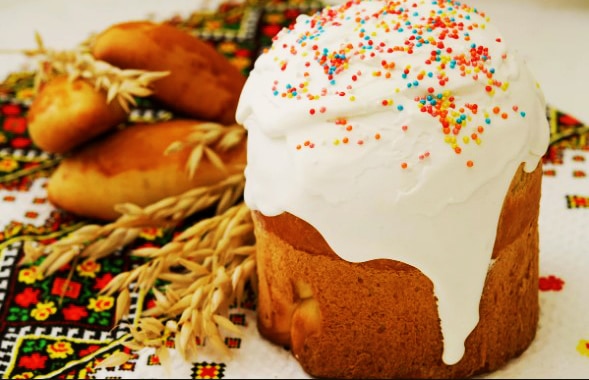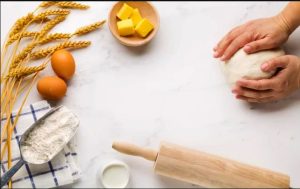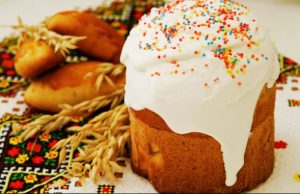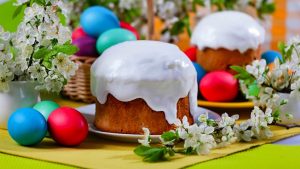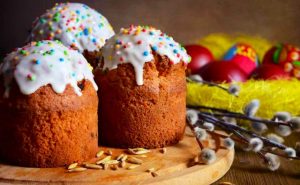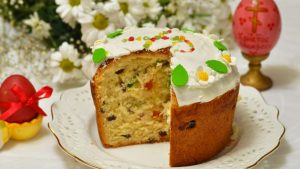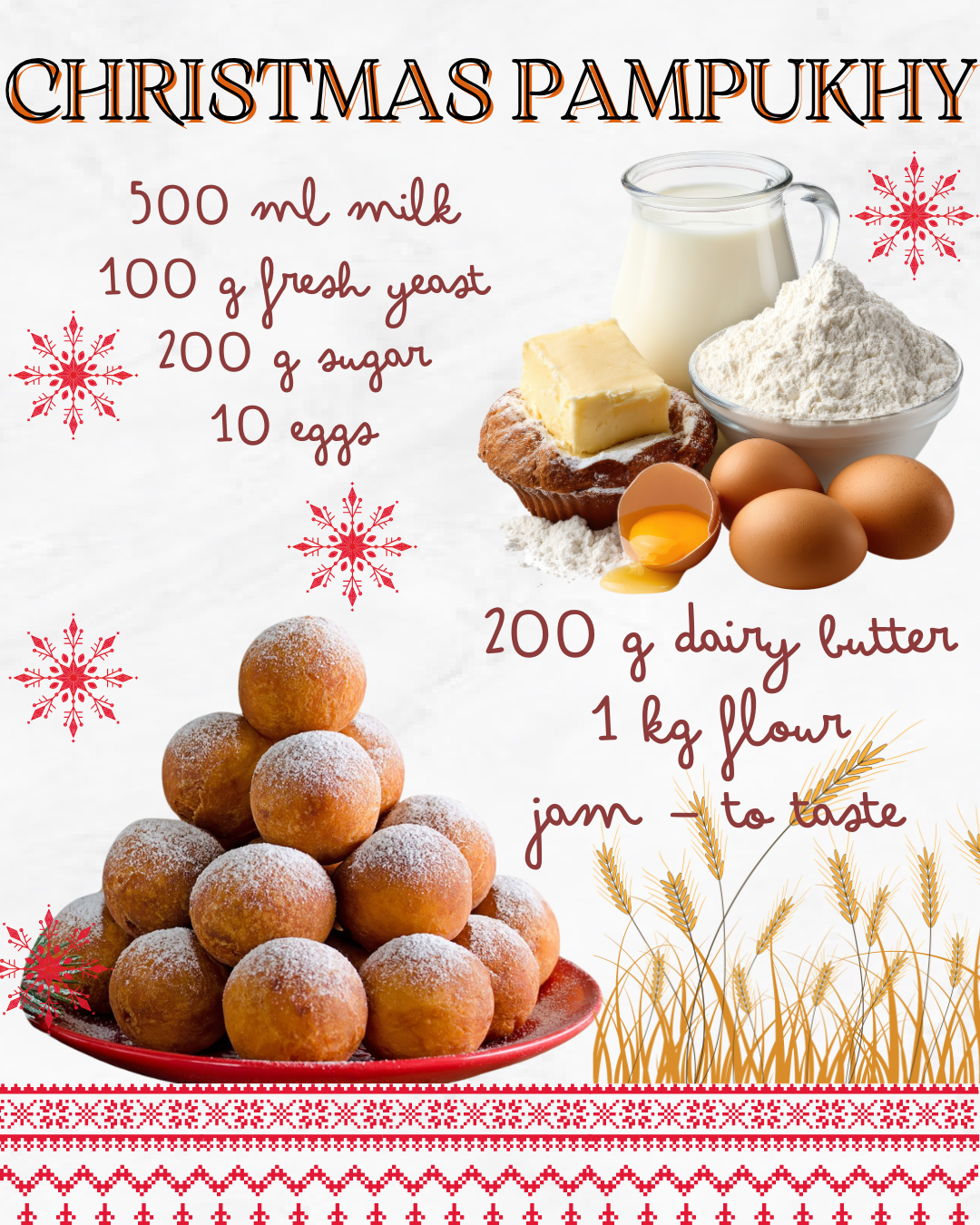Easter bread is a special, festive, and solemn dish – one of the main foods on the Easter table. Its baking requires a lot of patience but the result is truly rewarding.
In ancient times, goodwives put the tastiest, freshest, and sweetest ingredients in the Easter bread dough and make everything in good spirits.
People say: “There are as many recipes for Easter cake as there are goodwives.” But whatever Easter bread you are going to bake – with dried apricots, cherries, cranberries, candied fruits, nuts, chocolate crumbs, raisins, etc. – there are tips by following which you can cook the most perfect Easter cake. Period.
We are going to give you valuable advice and reveal some secrets to help you bake yummy, flavorful, airy, and soft Easter cake that is a total crowd-pleaser.
1) Before cooking you should sift the flour to saturate it with air and make the dough easy to rise and bake. It’s recommended to use powdered sugar instead of sand sugar.
2) The dough should not be too watery – otherwise, the Easter bread will be flat. Yet, it should not be too stiff as well. Otherwise, the Easter bread will feel too heavy and will get stale quickly.
3) The fatter the dough the more yeast it needs. To make the dough rise faster, dilute the yeast with warm water.
4) All ingredients should be of the same room temperature. Do not add too cold or too hot components, for instance, hot milk and eggs from the fridge.
5) Slow dough fermentation with a small amount of yeast gives a better result than a quick one. Therefore, experienced goodwives start cooking the pre-dough overnight.
5) The salt slows down the fermentation, so it is better to salt the dough when it has already risen.
6) The dough for Easter bread does not like temperature drops and drafts – create an optimal indoor temperature of about 25 °C.
7) To give the Easter bread dough a sunny appetizing color, add saffron to the dough or use eggs with bright yellow yolks. If don’t have such eggs, then take usual eggs, separate egg yolks from whites, mix the egg yolks with salt and leave them in the warm place for a night.
8) Almost all kinds of yeast Easter cakes should rise three times: when the pre-dough is cooked, when the dough is kneaded, and when the dough is left in the baking mold.
9) The dough should be kneaded long and thoroughly. According to the old belief, the dough needs to be hit 300 times, so that the guests then compliment the Easter bread 300 times.
Of course, it’s best to knead the dough by hands. From the heat of hands, the dough kneads better. But it is reasonable if you bake a few Easter cake. The longer you knead the dough without adding raisins, dried apricots, or any other additions, the better.
10) Try to cut the kneaded dough with a knife – if it does not stick to the knife, does not stretch after it, then it can be put into the baking molds.
11) Grease baking molds with butter and sprinkle them with ground rusks or semolina, and put the baking paper on the bottom. Fill no more than 1/3 of the mold. When the dough rises to the edges of the molds, carefully place molds in the preheated oven.
12) A small Easter bread weighing less than 1 kg/35 oz is baked for 30 minutes, the paska of average weight (about 1 kg/35 oz) is cooked for 45 minutes, and the Easter bread weighing over 1.5 kg/53 oz should be baked for 1 hour.
Huge paska weighing 2 kg/70 oz and more is cooked for 1.5 hours. A thoroughly baked Easter bread will stay fresh for longer.
13) The baking temperature depends on how much the dough has risen. If the dough has well risen, Easter cake can be baked at a high temperature (about 200°C/392°F), if not – it is necessary to bake paska longer and at a lower temperature.
In the electric oven, the Easter bread should be baked at a temperature of 180°C/356°F, in a gas oven – at 200-220°C/392-428°F.
14) When Easter bread is baking, do not open the oven too often and do not open the windows – there should be no draft.
15) Bake paska in a humidified oven (put a container with water in the bottom). To check whether the Easter bread is baked or not – insert a stick in it: if the stick is dry, paska is done.
You should pierce the dough and rotate the mold very carefully to prevent the dough from settling down and forming a non-baked clod of dough. To protect the top of the Easter bread from burning, put above a circle of paper soaked with water.
16) The baked Easter bread should be carefully removed from the mold, laid on the side and left in this position until the bottom is cooled down.
Then paska is decorated with candied fruits, nuts, jam berries, grated chocolate or, as in ancient times, with painted millet or poppy seeds. You can also top the Easter bread with fondant or whipped whites.
17) It is necessary to behave quietly while cooking – do not make noise or what’s even worse – swear. It is believed that even sound vibration can affect the “growth” of the Easter bread.
18) In order to make the Easter bread stay fresh and soft for long, it is recommended to add a little horilka or alcohol to the dough.
19) You can store the Easter bread in a fridge or freezer but it has to be tightly packed.
Have you liked the article about Ukrainian Easter bread – Secrets of baking?
Join and follow us on social media to keep up-to-date with our freshest recipes, cooking tips, and entertaining articles related to the Ukrainian people, culture, and traditions!
Find us on Facebook, Instagram, Google+, Pinterest, etc. to comment and share your favorite Ukrainian recipes with friends and relatives!

